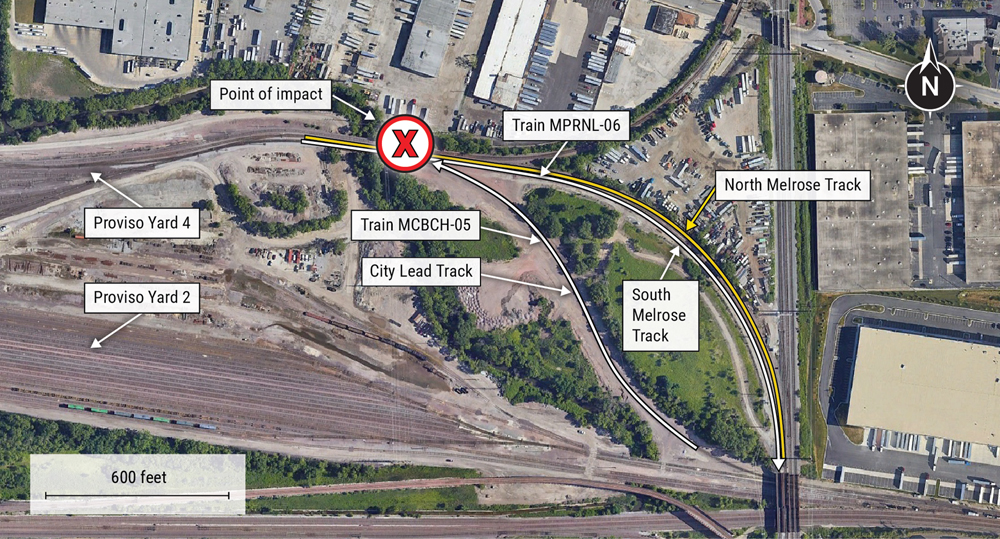WASHINGTON – The Federal Railroad Administration has issued a safety advisory calling on railroads to use wheel impact load detectors to properly identify and replace freight car wheels that could significantly damage track and lead to derailments.
The advisory was issued yesterday in response to the Feb. 21 derailment of a Union Pacific coal train on the Overland Route in Gothenburg, Neb. Thirty of the train’s cars derailed – including some that had been operating for several months after wheel impact load detector measurements had flagged their high-impact wheels.
 “FRA’s preliminary investigation indicates the derailment was likely caused by high-impact wheels breaking a track joint bar. Records from FRA’s investigation show one of the freight cars had a WILD measurement of 130.6 KIPs when it operated over the track joint bar that was found broken,” the advisory says. “Records also show this freight car continued to operate for several months prior to the derailment after its high-impact wheels were identified by WILDs. WILD measurements showed high-impact wheels in November and December 2022, and again in January 2023. During its investigation, FRA also identified eight other freight cars in the derailed train with high-impact wheels.”
“FRA’s preliminary investigation indicates the derailment was likely caused by high-impact wheels breaking a track joint bar. Records from FRA’s investigation show one of the freight cars had a WILD measurement of 130.6 KIPs when it operated over the track joint bar that was found broken,” the advisory says. “Records also show this freight car continued to operate for several months prior to the derailment after its high-impact wheels were identified by WILDs. WILD measurements showed high-impact wheels in November and December 2022, and again in January 2023. During its investigation, FRA also identified eight other freight cars in the derailed train with high-impact wheels.”
Wheels with a WILD measurement of greater than 80 KIPs should be replaced when in a shop, while those with a measurement greater than 90 KIPs should be replaced when found in service, FRA said.
The FRA also said railroads should review dynamic ratios that compare a car’s WILD measurements when loaded and when empty.
“Wheels should be replaced when an empty railcar with a dynamic ratio of 5 or higher has a preceding peak impact greater than 100 KIPs. Replacement at such time will reduce or eliminate further damage to the freight car’s wheels, rails, and track structures,” FRA said.














One question… How is it that the FRA can give precise data for these high impact wheel defects but can not produce the data to document the 22% defect rate they found on outbound trains at UP’s Bailey Yard at North Platte, NE.
As Arsenio Hall used to say on his TV show, “Things that make you go “hmmm…”
Another strongly worded *recommendation* from the folks charged with regulating the railroads. I’m sure the railroads will get right on it. I can’t think of one new regulation the FRA has put out under this administration to make railroads & the public safer.
This is exactly why regulations on maintenance must be mandatory, not simply “recommended”.
These things get passed by because the RRs have eliminated qualified inspectors and successfully lobbied to get the FRA off their backs.
How does a wheel become “high impact”?
Flat spots on wheel surfaces can often result from wheels sliding along the rail surface. This can come from hard braking and perhaps other reasons.
The actual contact surface between rail and wheel is quite small, so “flat spots” are most often heard more than seen as they pass by an observer.
A flat spot that may measure quite small can make a lot of noise.
It is also possible for small pieces to break loose from the wheel surface.
I can’t tell you to what extent wheels on cars lock up and slide on the rails due to “hard braking” because I never personally witnessed that. However, if I had a dollar for every sliding wheel on a car I saw because the hand brake was on I’d be a rich man.
To what extent do flat spots on wheels translate into damaging measurements from Wheel Impact Load Detectorts (WILD), I do not know. Two decades ago the WILD (detector) was at the beginning of my crew district which meant that if my train triggered a WILD defect the dispatcher would notify me to run sometimes 25mph, sometimes 20mph, or even sometimes 10mph to the next terminal where the car would be repaired. That was about 100 miles. Why the procedure wasn’t to set the car out and have a block truck come out and swap out the axle in the field I do not know. Hopefully by now they’ve figured out a better way.
Did you catch that, Mr. Vena? “Thirty of the train’s cars derailed – including some that had been operating for several months after wheel impact load detector measurements had flagged their high-impact wheels.”
Don’t bother Mr. Vena, he’s trying to run a railroad… LOL.